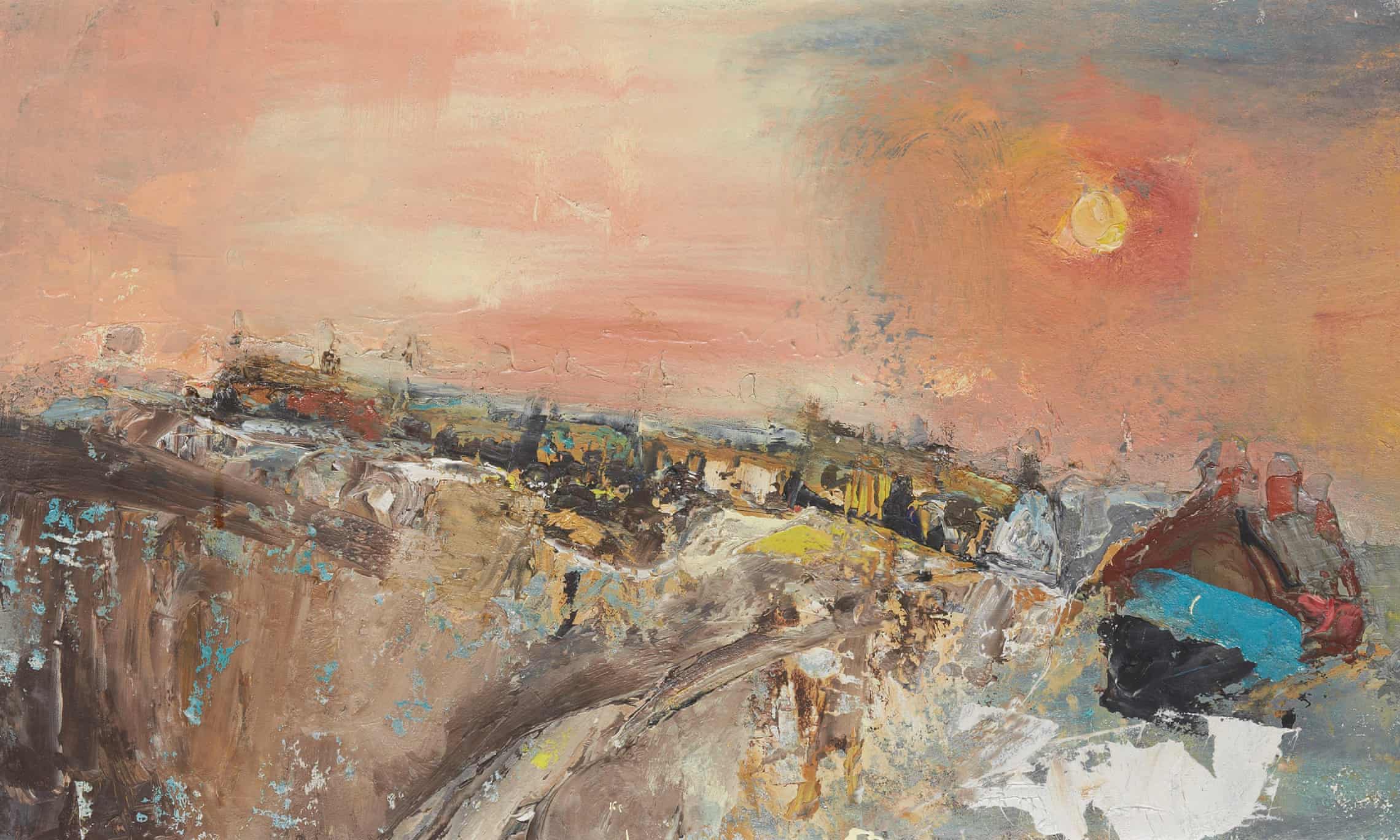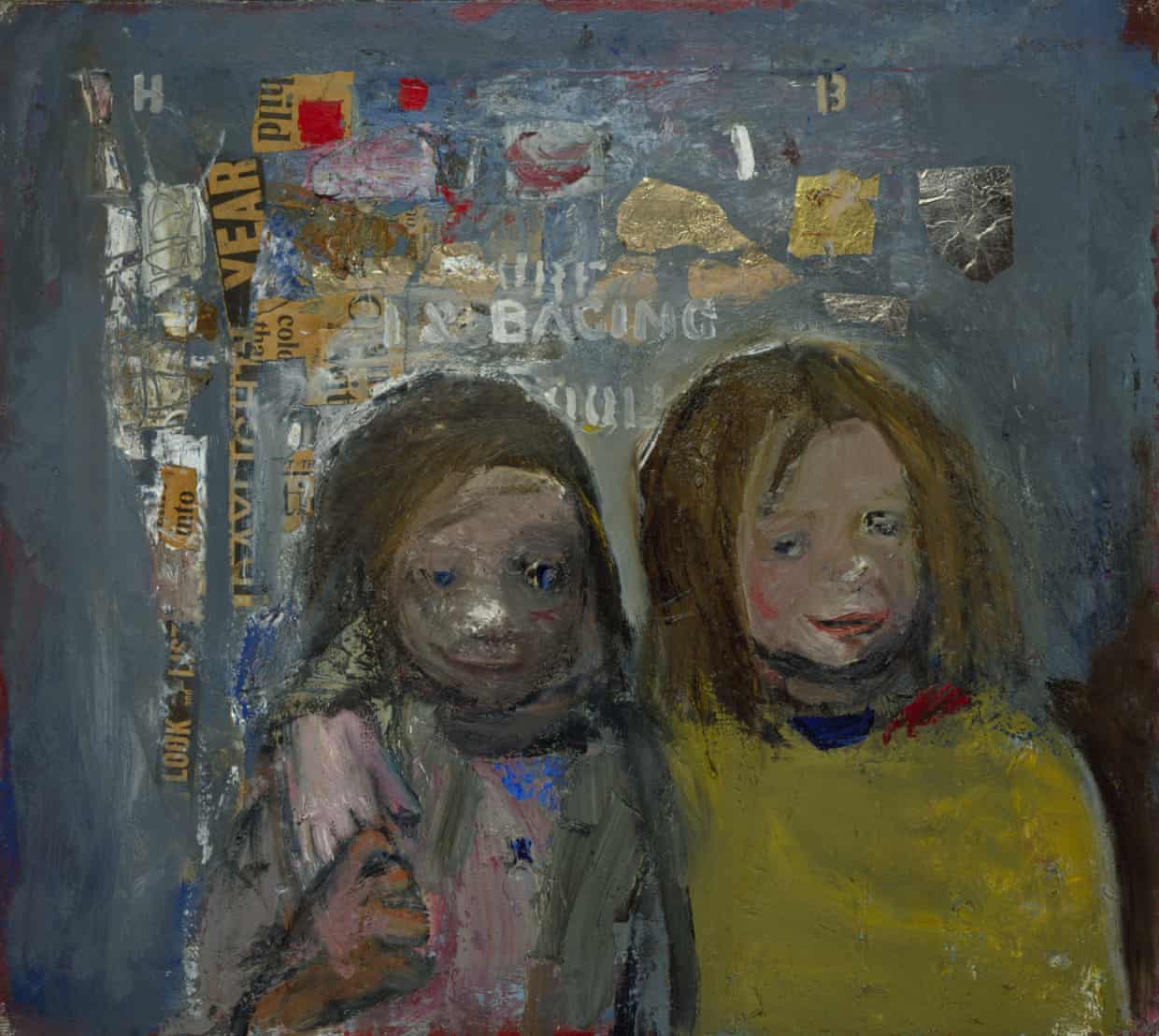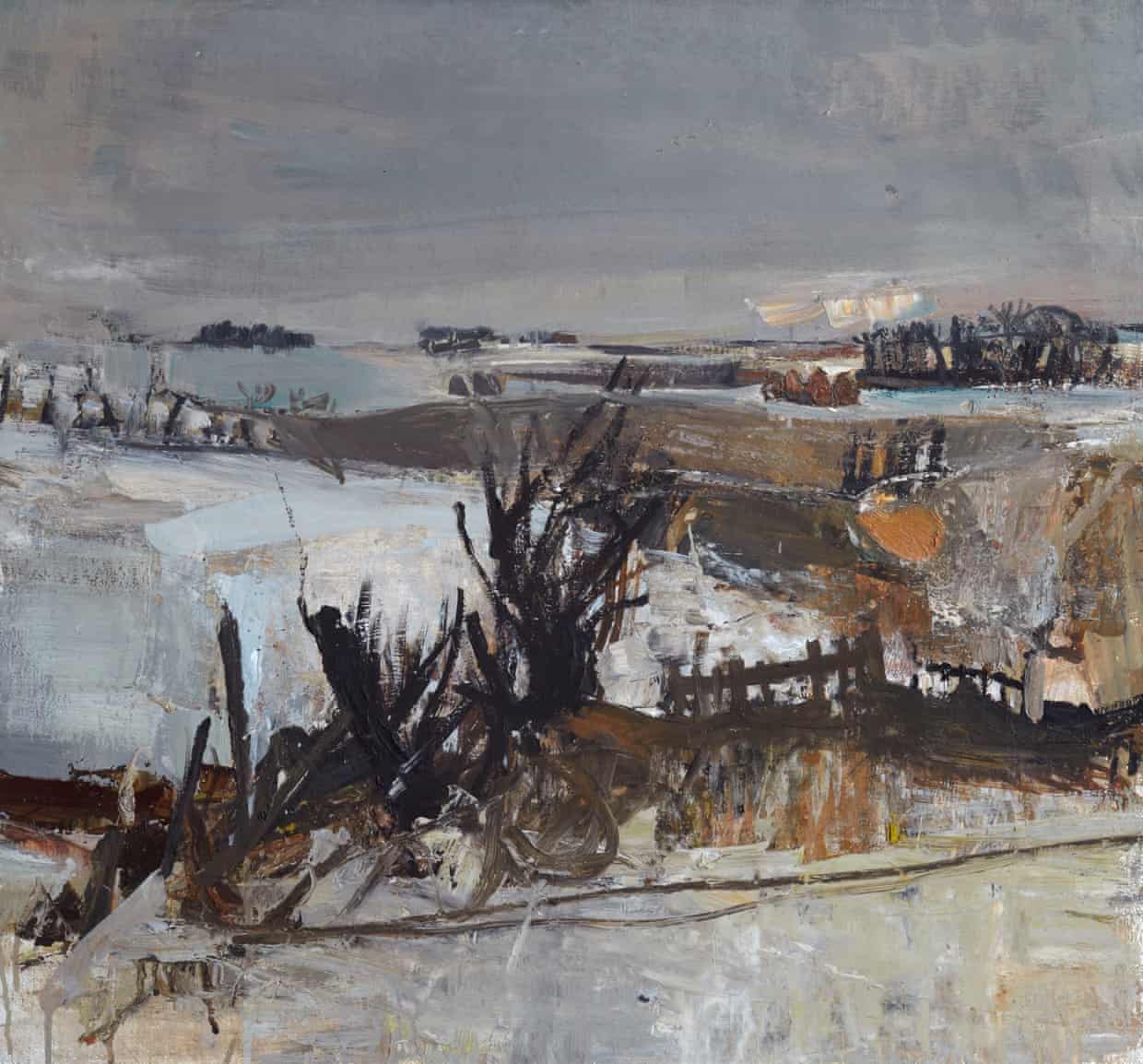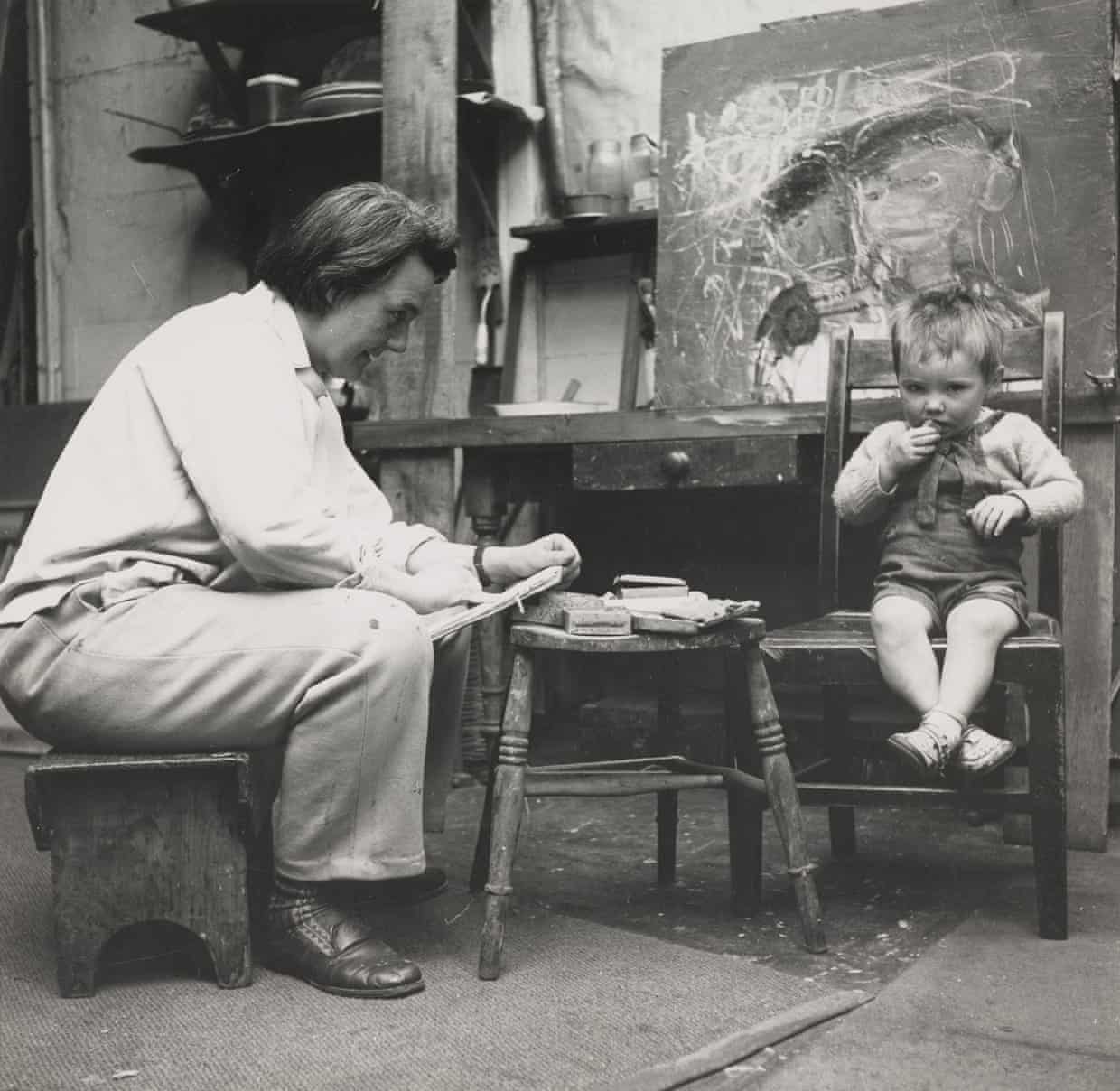Joan Eardley: the forgotten artist who captured Scotland's life and soul

Joan Eardley, who dieaged only 42 in 1963, is barely known in England. In 2007 the National Galleries of Scotland mounted a full retrospective, which attracted a new Scottish audience to her art. Currently, the Scottish National Gallery of Modern Art offers a more focused exhibition, concentrating on her passion for two places: Townhead, a poor part of Glasgow; and Catterline, a small fishing village a hundred miles north of Glasgow, on the Kincardineshire coast. Yet there are no known plans for this show to travel to any other part of Britain, even though Eardley, acclaimed as an artist of world-class importance, had an English father and was born in Sussex.
She moved to Scotland almost by happenstance. In 1929, when she was just seven, her father, who had been gassed during the first world war and had experienced failure as a dairy farmer, killed himself. Her mother decided to take Joan and her younger sister back to her family home at Blackheath, London, to live with their grandmother and aunt. But late in 1939, mother, grandmother and the two girls moved to Bearsden, a well-to-do suburb north-west of Glasgow, thereby escaping a London threatened with German bombing raids. Having spent a brief period at Goldsmiths College of Art, Joan began her studies at Glasgow School of Art in January 1940. This same year, while almost crippled with shyness, she began frequenting the studio of the Polish artist Josef Herman, then living in Glasgow, whose cursory style of drawing may have freed up her own. She also began exploring the east of the city, sensing that its vitality lay in this direction.
Had Eardley hung on to the coattails of her fellow students, the two Roberts –
Colquhoun and MacBryde – travelled with them to London, drunk with them in Soho and, like them, borrowed a few modernist mannerisms from the emigre artist Jankel Adler, she might today be better known and easier to pigeonhole. Her work, however, would have been very different. By nature, Eardley was drawn to dilapidation. Her encounter with London was brief. Instead she put down roots among the tenement blocks in a condemned part of Glasgow where city planners envisaged a vast motorway interchange, and in a rural outpost, half empty and in decline owing to the greater attraction to the men of work on deep-sea trawlers in Stonehaven or Aberdeen. And though she cultivated an up-to-date knowledge of art, she turned her back on artistic fads, searching instead for the innate energy in her subjects, both people and places.
The current exhibition begins in the 1950s, with the Townhead drawings and paintings, produced after several months’ study in Paris and Italy, funded by the award of two scholarships. These works, although localised, have an international context, for they align Eardley with the emphatic return to realism, across many European countries, during the aftermath of war. The studio room in which her friend Angus Neil stands gaunt and alone is as gloomily dramatic as any James Pryde, but what electrifies the scene is the unmediated ultramarine shadow that runs down his back and cuts across the floor. These early mature oils suggest that she painted as a bird sings – not unknowingly but unselfconsciously. She immediately caught attention. Here, seen for the first time since the 1950s, is A Carter and His Horse, which the Government Art Collection bought in 1952 and then loaned to the British Embassy in Tokyo for decades. It captures the carter beside his horse, lighting a cigarette while he waits for goods to be unloaded from the harbour glimpsed in the background. Yet the 4ft-wide picture has an impressive scale. Eardley carries the eye across the surface by means of small connecting passages, without forcing the interest at any point. The brushwork is brusque, almost nonchalant, suggesting a confidence that feels no need to impress.
Eardley had two studios, one after another, in the Townhead area. The loss of the first caused her much anxiety. “It’s desperate to lose the studio … it is so near the slum parts that I draw. And so easy to get the slum children to come up. And I have become known in the district, in George St, and all the streets round about.” Initially the children came to her studio simply in order to watch her at work, but soon became for her a major subject. They would turn up, asking to be painted, no doubt foreseeing the sweets they could buy with the few pence she gave them. She came to know about a dozen families, and was especially fond of the large Samson family whom she painted over seven years or more. The Samsons amused her, as she said in a taped interview: “They are full of what’s gone on today – who has broken into what shop and who has flung a pie in whose face – it goes on and on. They just let out their life and energy … I do try to think about them in painterly terms … all the bits of red and bits of colour and they wear each other’s clothes – never the same thing twice running … even that doesn’t matter… they are Glasgow – this richness that Glasgow has – I hope it always will have – a living thing … as long as Glasgow has this I’ll always want to paint.”
Eardley rejected any suggestion that her Townhead paintings were socially or politically motivated: “I would very much dislike to have such an attitude in art,” she retorted. But as a regular reader of Picture Post and herself an amateur photographer, she could not but be aware of the interest aroused by the Gorbals, in part through the photography of Bill Brandt and Bert Hardy. In turn, Eardley was a major influence on the photographer Oscar Marzaroli and his unforgettable photograph of some of the Samson family, taken in Eardley’s studio, forms part of the current exhibition. Certainly her interest in Townhead and its inhabitants went far beyond its rich pictorial interest. Her intense looking and her method of drawing affirm her admiration for Van Gogh, and an affinity between her urban work and his involvement with the coal mining district of the Borinage, in Belgium, has often been noted. Such an affinity is less evident in her later Townhead paintings and drawings, made in the late 1950s and early 60s. In these, her obsessive interest in graffiti in some places invigorates the picture surface, but in others adds only a factitious liveliness, while the children, formerly the embodiment of vitality, become mere ciphers for her feelings. Eardley was by now so familiar with the broad grins, wide eyes or occasional squints in the faces of these children that she resorted to the stereotypical. The introduction of collage added further new layers of interest. Nevertheless some of these paintings seem queasily balanced between the comic and the sentimental.
Relevant here is the pain Eardley suffered in her neck and back during the last eight years of her life. It led to her need at times to wear a surgical collar. It is thought that the repeated sharp movements made with her head while standing up and obsessively drawing outdoors may have caused a slipped disc. Her biographer Cordelia Oliver claims that this pain terminated her habit of drawing on the spot, and from then on she relied more on photographs, her own and those taken by her friend Audrey Walker, as source material for her work. As Eardley rarely dated any of her drawings or paintings, the accuracy of this claim is difficult to ascertain. But it might explain the repetitiveness in her later Townhead work.
She found refreshment and release at Catterline which, since 1952, had become her second home; it offered, she once said, “just vast waste and vast seas, vast areas of cliff”. The moment she heard from a weather report, or via a phone call from a neighbour in the village, that a gale was approaching, she caught the next train to Stonehaven where, for the next stage in her journey, she eventually kept a Lambretta. While at Catterline she had shifted from canvas to board, needing a firmer surface for her more dense and immersive work in the fields or on the shore. She had from the start shown a liking for panoramic views of the surrounding landscape and the string of cottages that ran along the top of the cliff. But when she began painting the sea, her work increased in size, and her finest seascapes are 6ft (1.8m) in breadth. She painted not just in fine weather but also in snowstorms and gale-force winds, wearing an RAF flying suit and boots, with her easel held in place by means of ropes and boulders, the sea broiling at her feet. The experience conveyed by these paintings, and the elemental energy they communicate, provide the climax to this exhibition.
Eardley’s love of steamed puddings may have been an ingredient in her attractive sturdiness. Her close friendships and affairs with a handful of women, as well the affection and respect she inspired in her neighbours and within the art world, sustained her, but did not always keep recurrent depression at bay. But it was her colossal drive to create that, above all, isolated her and took her to places where few could follow. Her untimely death, from cancer, cut short her career. Yet with each exhibition and every new publication on her art, her stature grows.
Soon after acquiring her first two-room cottage in the village, No 1 Catterline, she expressed satisfaction with her new surroundings: “It’s night – and the fire is giving a great, flickering light – and the lamplight too. It’s a great wee house. The floor is all levels at once. And the table three tarry boards nailed together. There’s a great big bed, half wood and half spring. A Grannie’s pot, a bucket and a basin that’s about all except for three lovely wee chairs. I’m sitting looking out at the darkness and the sea. I think I shall paint here. This is a strange place – it always excites me.”




No comments:
Post a Comment